Soil disinfection in greenhouses and polyhouses
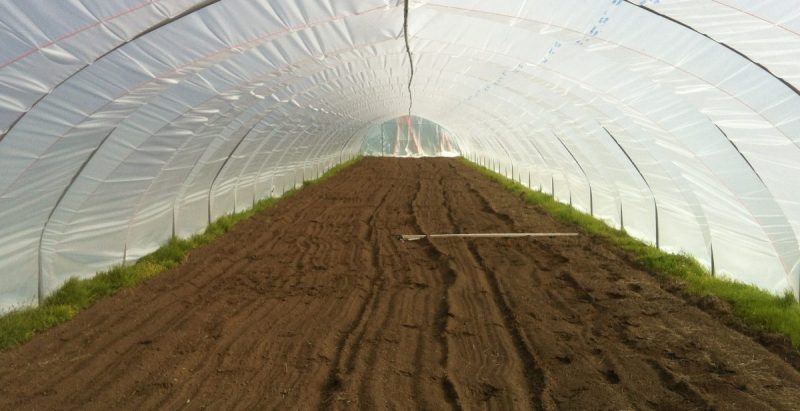
Greenhouses and polyhouses are protected areas, in which the influence of environmental factors (light, temperature, precipitation, air currents) are altered, favoring the development and transmission of pests and diseases from one year to another. In greenhouses and polyhouses/polytunnels, pests (overwintering insects in the egg stage, nematodes, etc.), diseases (Verticillium spp., Fusarium spp., Phytophthora spp., Etc.), and weeds can appear, affecting the crops to a large extent. Thus, it is recommended that every year, before setting up the crop, when preparing the soil, to carry out soil disinfection with thermal and chemical treatments.
Recommended products for chemical soil disinfection:
Basamid Granules
It is a fumigant disinfectant in the form of granules, which acts against insects, nematodes, diseases, and weeds. Due to the product formulation, it can be applied by scattering and incorporating it in the soil, approximately 30-35 days before setting up the culture.
Recommended products
-
You can find products on a different store
Change Store -
You can find products on a different store
Change Store -
You can find products on a different store
Change Store -
You can find products on a different store
Change Store -
You can find products on a different store
Change Store -
You can find products on a different store
Change Store -
You can find products on a different store
Change Store -
You can find products on a different store
Change Store -
You can find products on a different store
Change Store -
You can find products on a different store
Change Store -
You can find products on a different store
Change Store -
You can find products on a different store
Change Store -
You can find products on a different store
Change Store -
You can find products on a different store
Change Store -
You can find products on a different store
Change Store -
You can find products on a different store
Change Store -
You can find products on a different store
Change Store -
You can find products on a different store
Change Store -
You can find products on a different store
Change Store -
You can find products on a different store
Change Store -
You can find products on a different store
Change Store -
You can find products on a different store
Change Store -
You can find products on a different store
Change Store -
You can find products on a different store
Change Store
Before applying Basamid Granules, the soil must be prepared as follows:
- All the plant debris have to be removed and the soil must be ground well (to a depth of 30 cm) to avoid the rapid evaporation of the disinfectant gas.
- It is recommended to ensure a soil moisture of 60% (of the field capacity), both before and during the application of the product.
The application of the product can be done using special equipment or manually.
! It is mandatory to wear protective equipment (gloves, mask, protective suit and suitable footwear).
Recommended products
-
You can find products on a different store
Change Store -
You can find products on a different store
Change Store -
You can find products on a different store
Change Store -
You can find products on a different store
Change Store -
You can find products on a different store
Change Store -
You can find products on a different store
Change Store -
You can find products on a different store
Change Store -
You can find products on a different store
Change Store -
You can find products on a different store
Change Store -
You can find products on a different store
Change Store -
You can find products on a different store
Change Store -
You can find products on a different store
Change Store -
You can find products on a different store
Change Store -
You can find products on a different store
Change Store -
You can find products on a different store
Change Store -
You can find products on a different store
Change Store -
You can find products on a different store
Change Store -
You can find products on a different store
Change Store -
You can find products on a different store
Change Store -
You can find products on a different store
Change Store -
You can find products on a different store
Change Store -
You can find products on a different store
Change Store -
You can find products on a different store
Change Store -
You can find products on a different store
Change Store
Recommended products
-
You can find products on a different store
Change Store -
You can find products on a different store
Change Store -
You can find products on a different store
Change Store -
You can find products on a different store
Change Store -
You can find products on a different store
Change Store -
You can find products on a different store
Change Store -
You can find products on a different store
Change Store -
You can find products on a different store
Change Store -
You can find products on a different store
Change Store -
You can find products on a different store
Change Store -
You can find products on a different store
Change Store -
You can find products on a different store
Change Store -
You can find products on a different store
Change Store -
You can find products on a different store
Change Store -
You can find products on a different store
Change Store -
You can find products on a different store
Change Store -
You can find products on a different store
Change Store -
You can find products on a different store
Change Store -
You can find products on a different store
Change Store -
You can find products on a different store
Change Store -
You can find products on a different store
Change Store -
You can find products on a different store
Change Store -
You can find products on a different store
Change Store -
You can find products on a different store
Change Store
Recommended products
-
You can find products on a different store
Change Store -
You can find products on a different store
Change Store -
You can find products on a different store
Change Store -
You can find products on a different store
Change Store -
You can find products on a different store
Change Store -
You can find products on a different store
Change Store -
You can find products on a different store
Change Store -
You can find products on a different store
Change Store -
You can find products on a different store
Change Store -
You can find products on a different store
Change Store -
You can find products on a different store
Change Store -
You can find products on a different store
Change Store -
You can find products on a different store
Change Store -
You can find products on a different store
Change Store -
You can find products on a different store
Change Store -
You can find products on a different store
Change Store -
You can find products on a different store
Change Store -
You can find products on a different store
Change Store -
You can find products on a different store
Change Store -
You can find products on a different store
Change Store -
You can find products on a different store
Change Store -
You can find products on a different store
Change Store -
You can find products on a different store
Change Store -
You can find products on a different store
Change Store
Apply at temperatures above 6 °C, when the soil is sufficiently moist. However, the optimum temperature range for application is 10-20 °C.
The microgranules have to be incorporated into the soil to a depth of 15-25 cm, usually with a miller, to ensure a more uniform distribution. The dosage recommended by the producer is 500 kg/ha.
Abundant irrigation is necessary after the application of the product, to favor the decomposition of the granules and the release of the gas.
After treating the soil with Basamid, the ground must be immediately covered with a transparent plastic wrap to keep the released gas in the soil for as long as possible.
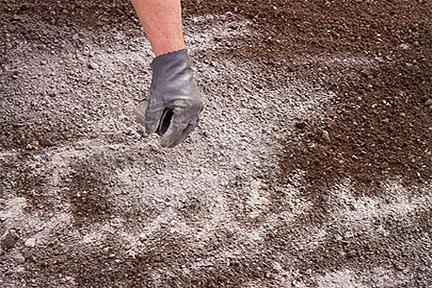
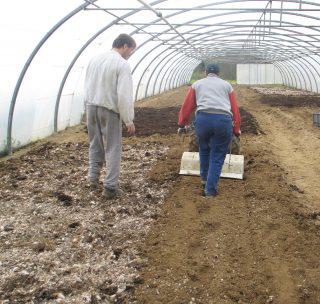
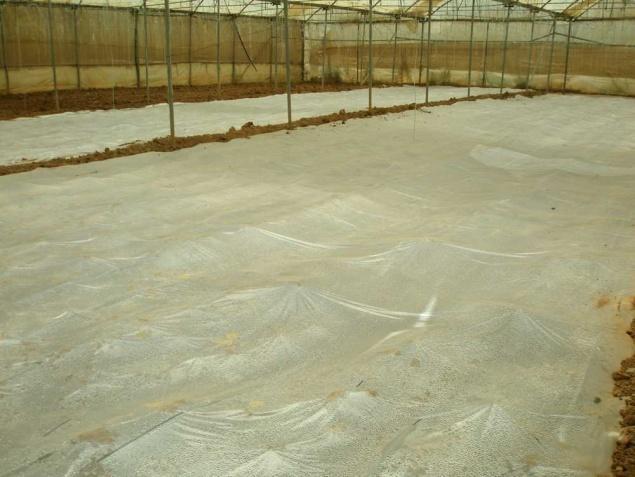

After the treatment and until sowing or planting, a break interval of 10-30 days must be ensured (depending on the soil temperature). The lower the temperature (a minimum of 6 °C), the longer the waiting time (over 30 days).
After removing the plastic wrap, double aeration of the soil has to be carried out to release the remaining gas. After that, a phytotoxicity test must be done with indicator plants (watercress, lettuce). A few seedlings are planted in the disinfected soil, and if after 3-4 days no symptoms of toxicity are observed, the culture can be set up. You can also put lettuce seeds in samples of treated soil, and if they do not germinate, the soil still needs time for aeration.
Nemasol 510
It is a liquid, water-soluble disinfectant with a broad spectrum of control, which is applied in greenhouses and polyhouses/polytunnels. Being a water-miscible product, it is recommended to apply it through the irrigation system. Upon contact with moist soil, Nemasol turns into a gas with a disinfectant effect, which protects crops for a long time (up to 2 crop cycles) against nematodes, diseases, and weeds.
Recommended products
-
You can find products on a different store
Change Store -
You can find products on a different store
Change Store -
You can find products on a different store
Change Store -
You can find products on a different store
Change Store -
You can find products on a different store
Change Store -
You can find products on a different store
Change Store -
You can find products on a different store
Change Store -
You can find products on a different store
Change Store -
You can find products on a different store
Change Store -
You can find products on a different store
Change Store -
You can find products on a different store
Change Store -
You can find products on a different store
Change Store -
You can find products on a different store
Change Store -
You can find products on a different store
Change Store -
You can find products on a different store
Change Store -
You can find products on a different store
Change Store -
You can find products on a different store
Change Store -
You can find products on a different store
Change Store -
You can find products on a different store
Change Store -
You can find products on a different store
Change Store -
You can find products on a different store
Change Store -
You can find products on a different store
Change Store -
You can find products on a different store
Change Store -
You can find products on a different store
Change Store
Before carrying out treatment with Nemasol 510, the soil should be free of all plant debris and ground well (to a depth of 30-40 cm) to promote an even distribution of the solution. Drip irrigation is the most appropriate way to apply Nemasol 510 because it allows a uniform distribution on the soil surface, but also in its depth.
The drip strips must be installed and covered with plastic wrap, to allow the fumigant gas generated by Nemasol to remain in contact with the pathogens for a longer time.
! It is mandatory to wear protective equipment (gloves, mask, protective suit and suitable footwear).
After that, the solution is prepared and distributed through the irrigation system. It is very important to follow the manufacturer’s recommended dose of 700 L / ha and a concentration of 1-5%.
The minimum application temperature of Nemasol is 15 °C in the soil and 10 °C in the atmosphere. The best time to carry out the treatment is in the morning when the temperatures are not very high.
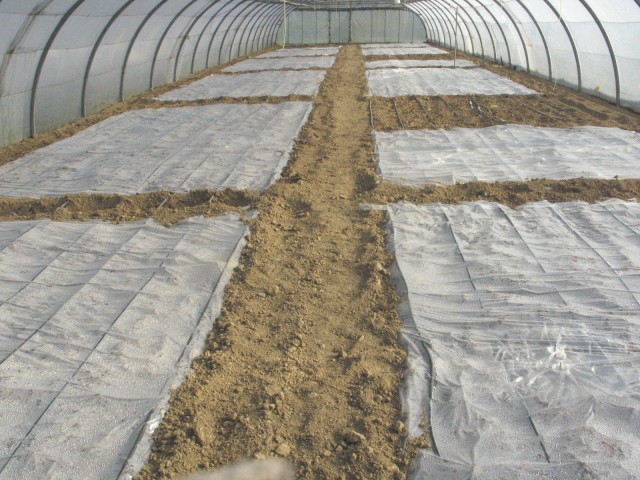
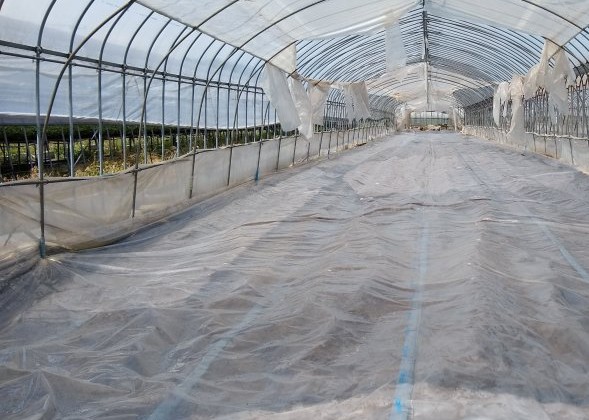
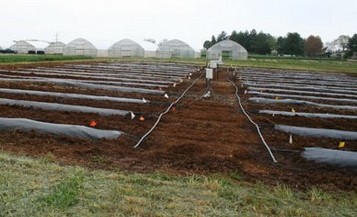
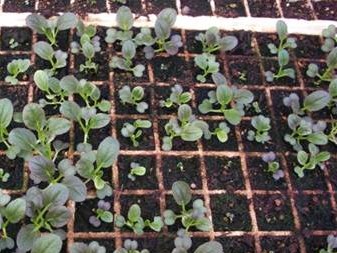
The land is kept at rest, covered with plastic wrap, for a period of about 3 weeks. After removing the wrap, a phytotoxicity test must be done with indicator plants (watercress, lettuce). A few seedlings are planted in the disinfected soil, and if after 3-4 days no symptoms of toxicity are observed, the culture can be set up. You can also put lettuce seeds in samples of treated soil, and if they do not germinate, the soil still needs time for aeration.
Thermal disinfection
Thermal disinfection consists of the use of superheated steam, at 135-140 °C, to ensure a temperature of 80 °C in the first 30 cm from the soil surface, for an interval of 5-6 hours. At the same time, steam heated to 110-115 °C is used to ensure a temperature of 80 °C after 10-12 hours. The soil is covered with polyethylene tarpaulins, fixed on the edges, while bags filled with sand or earth are placed on the margins. Under the tarpaulins are inserted hoses, connected to a device. The soil is kept at rest for about 14 days.
Another method of thermal disinfection is soil solarization. This consists in covering the soil with transparent plastic wrap during the warmest period of the year (July-August), in order to increase the soil temperature by capturing and maintaining the solar radiation. Ideally, the temperature should reach 60 °C in the first 15-16 cm from the soil surface. It is recommended to moisten the soil before mounting the wrap in order to favor the distribution of heat in the soil and to sensitize the pathogenic microorganisms. It is advisable to bury the edges of the wrap in the ground, in order to favor the highest possible temperature rise. The soil must be kept covered for about 4-6 weeks, after which the wrap is carefully removed, so as not to bring untreated soil to the surface (which may contain weed seeds).
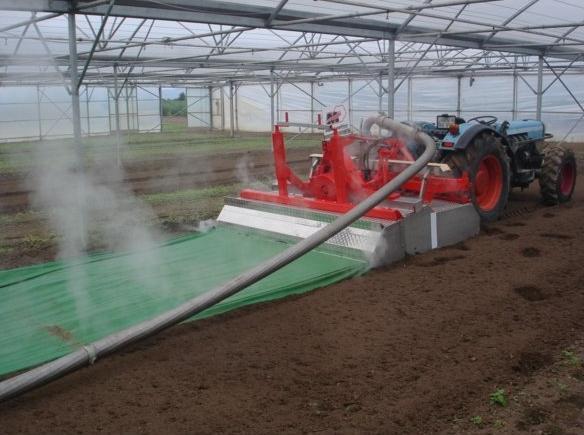
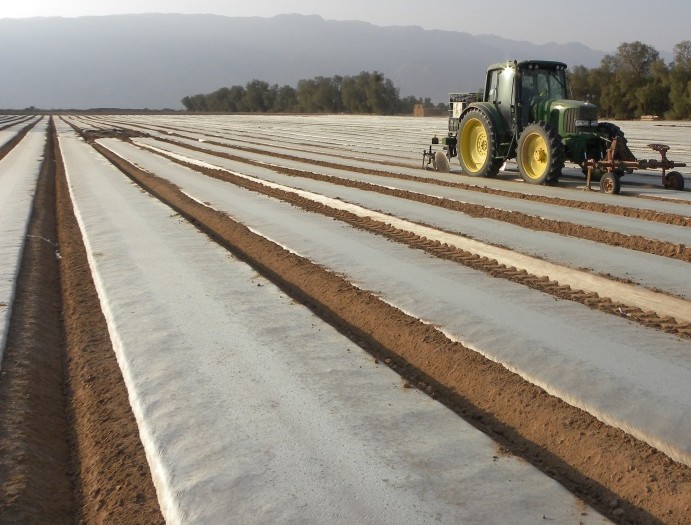
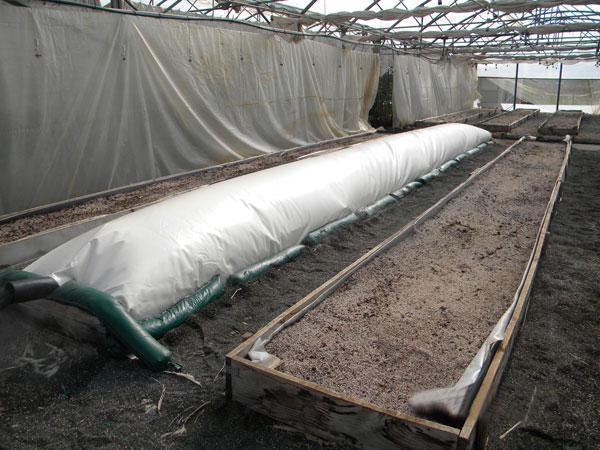
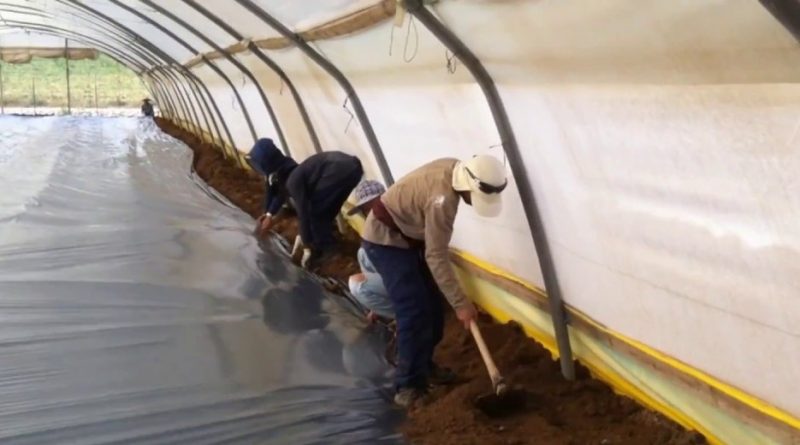
After thermal disinfection, the soil is left to rest for 10-15 days to restore the microbial flora.
Tips for a proper soil disinfection:
- Before carrying out the disinfection treatments, the land has to be freed from all plant debris and the soil must be ground to avoid the rapid evaporation of the disinfectant gas.
- After disinfecting with chemicals, before setting up a crop, it is recommended to carry out phytotoxicity tests with lettuce or watercress seedlings.
- The soil preparation after disinfection shall not be carried out at a depth greater than that at which the treatment was carried out in order not to bring the undisinfected soil into contact with the disinfected soil.
- The thermal steam disinfection method is suitable exclusively for protected areas treatment.
- At the time of disinfection, the soil must be free of any crop plants, as the treatment may affect them.
- Avoid bringing seedlings with untreated soil on their roots into the treated, protected area.
- During the treatment, it is mandatory to wear protective equipment and ventilate the treated space.
Soil disinfection treatments in protected areas (greenhouses and polyhouses/polytunnels) are essential, especially in the case of monoculture or the cultivation of plants affected by common diseases and pests.















































































































































































































































































































































































































































